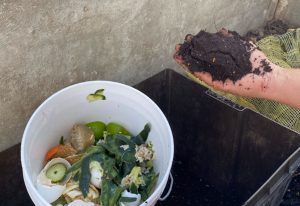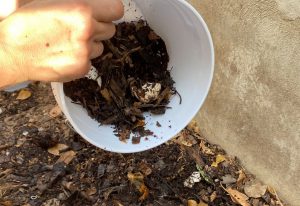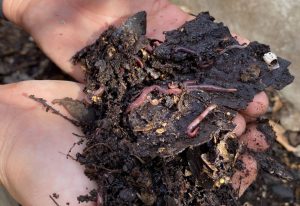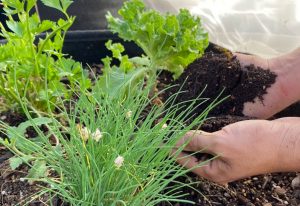
Vermicomposting at home: Let’s return to the soil what belongs to it
In “Vermicomposting at home: Let’s return to the soil what belongs to it”, we will learn how to make a vermicompost with Gustavo Monforte Herrero.
Did you know that in nature there is no garbage? When a fruit falls from a tree, it goes through a process in which many microorganisms, insects and even fungi are in charge of breaking it down and returning its nutrients to the earth, there is no waste.
When we throw our organic waste in the trash, it ends up in the landfill polluting the air and water. Much of this waste still has a large amount of nutrients that can be used! Therefore, it is our responsibility to emulate natural processes and return to the soil what belongs in the soil, but how can we do it? With the help of Californian worms! The worms transform this residue into a high-quality organic fertilizer that can improve the quality of the soil, increasing its capacity to retain water and nutrients, as demonstrated by the studies carried out by García et al. (2014). But what are these residues that we can feed the worms? According to Mary Appelhof’s “Worms Eat My Garbage” (1997), it is important to include a variety of waste, such as fruit and vegetable scraps, co fee and tea, and sheets of dull paper.
Among the organic residues that are not recommended to be fed, are the remains of meat, bones, dairy products, and citrus fruits. To compost this waste, we can use other methods such as hot compost or a biodigeste

Residuos orgánicos Organic residues
Fotografía / Photography: Mónica Pérez
Steps to start our vermicompost at home:
1. Prepare the worm compost: Get a large, sturdy container with a lid to use as your worm compost bin. Make sure it has holes for ventilation and the escape of liquids. You can also make your own container out of a plastic or wooden box. You can use more than one bin to create different vermicomposting cycles.
2. Add materials and food: To start composting, add a layer of shredded newspaper or cardboard to the bottom of the bin to provide a solid base and keep
in moisture. Next, add a layer of food scraps, such as fruits and vegetables, as well as dry leaves or shredded paper. We recommend you “pre-compost” the waste before feeding it to the worms. This means that you let them decompose for a couple of weeks, stirring and moistening frequently.

Worm compost bin
Photography: Mónica Pérez
3. Add the worms: Add California red worms to the container. These worms are excellent for vermicomposting as they feed quickly and make excellent compost. Add about 500 worms to start.
4. Take care of the worm compost: Keep the worm compost in a cool, shady place. Be sure to maintain adequate humidity in the container, but without puddling, you can add a little water if necessary.
Remember to add more pre-composted food once it is ready. Add a layer of dried leaves before and after feeding.

Worm compost bin
Photography: Mónica Pérez
5. Collect worm castings: After several weeks, the worms will have turned food scraps into rich, dark compost. There are different methods to separate the worms from the compost, such as placing them in the sun for a few minutes. The worms will go down to protect themselves from the light and you will be able to collect the organic matter from the top. Return all the worms to the compost bin to start the cycle over again!
We recommend using a plastic crate to sift the humus and all the contents of your compost; this way you will be able to separate the worm humus from the different material remains.

Agregando comida pre-compostada Adding pre-composted food
Fotografía / Photography: Mónica Pérez
For large families or to increase your vermicomposting capacity, you can make a bed for your worms out of different materials such as wood or cement, this way you will be able to introduce several kilos of worms, considerably increasing the amount of waste that you can transform into worm humus. In conclusion, to regenerate the earth and avoid wasting waste, worms are your friends! You can complement your worm compost with an urban garden, this way the nutrients that you rescue are used to sow new plants and the waste from your garden… is eaten by worms! Just like it happens in nature.

Adding earthworm humus to urban garden
Photography: Mónica Pérez











